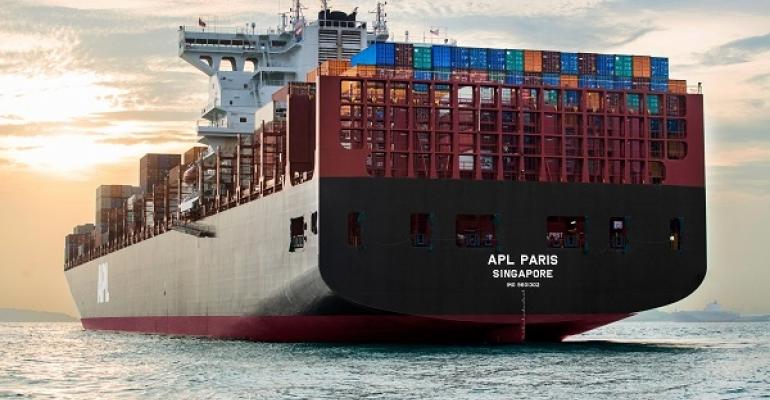The 50.7% reduction, as reported in the Business for Social Responsibility’s Clean Cargo Working Group (CCWG) Environmental Performance Assessment (EPA) of APL’s 2017 carbon dioxide emission data was verified by Lloyd’s Register according to the CCWG verification protocol and principles of ISO14064-3:2006 standard, APL said in a press release. This was an almost 3 percentage point improvement from the 48% reduction seen in the corresponding metric in 2016.
“We are proud to raise the bar in reducing the carbon footprint of our fleet operations once again. APL’s concerted efforts to improve our environmental efficiency year after year underscore our commitment to a greener and more sustainable maritime industry. Responsible environmental management is a cornerstone of APL’s operations and we will persevere in our pursuit for excellence in sustainable shipping,” said APL global head for safety security and environment Dennis Yee.
APL-operated vessels also achieved fuel savings of almost 5% in 2017, compared to a year ago, driven by APL’s holistic approach to boosting operational efficiencies, fleet and voyage optimisation, as well as the deployment of a fuel-efficient fleet of vessels, while also upholding a rigorous maintenance regime.
APL has also proactively adopted solutions to improve its vessel fleet performance, such as making bow modifications and retrofitting of propellers to vessels that aided in minimising wave resistance and improving propulsion efficiency respectively, for example.
-------------------------------------------------------------------------------------------------
Read more about carbon emissions reduction
LR joins projects to build sailing cargo ship with wind-assisted propulsion
Rigid sail and solar energy powered ship planned for 2018
-------------------------------------------------------------------------------------------------
Looking ahead, the ocean carrier has resolved to reduce carbon dioxide emissions per teu transported by 30% between 2015 and 2025, a target set by its parent group, the CMA CGM Group.
In line with expected future trends, APL is also seeking to engage counterparties more fully in the environmental platform, rolling out more pro-active engagements with customers so that they can also make a difference in reducing their carbon footprint through their shipments with the line.
Quarterly reports of carbon emissions resulting from their shipments give them a better indication of their carbon performance, while collaborative opportunities are also explored to find ways for customers to improve their carbon efficiency.
“As a responsible ocean carrier, APL will continue to engage in stakeholder collaborations as well as embrace technology innovation, clean energy sources and best practices for environmental protection as it facilitates global trade,” said APL.
Copyright © 2024. All rights reserved. Seatrade, a trading name of Informa Markets (UK) Limited. Add Seatrade Maritime News to your Google News feed.


